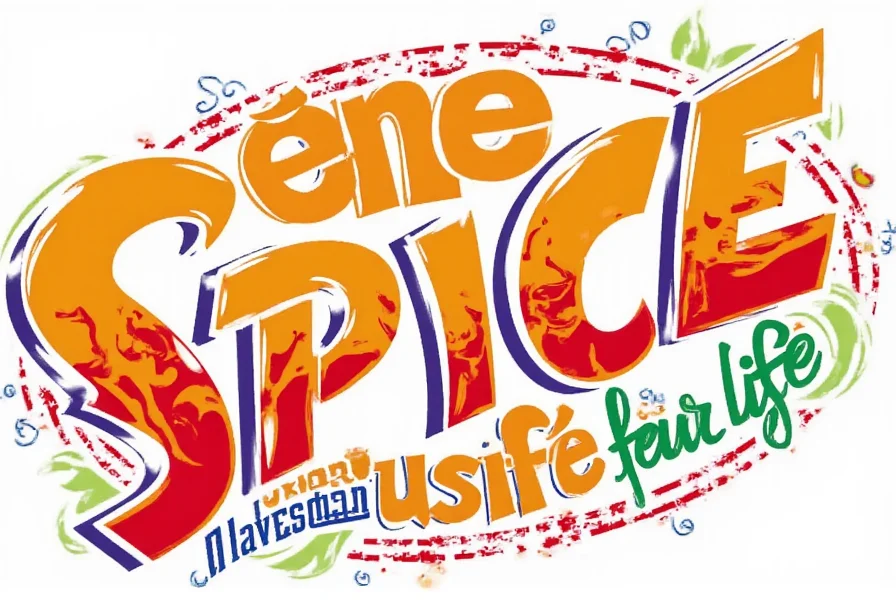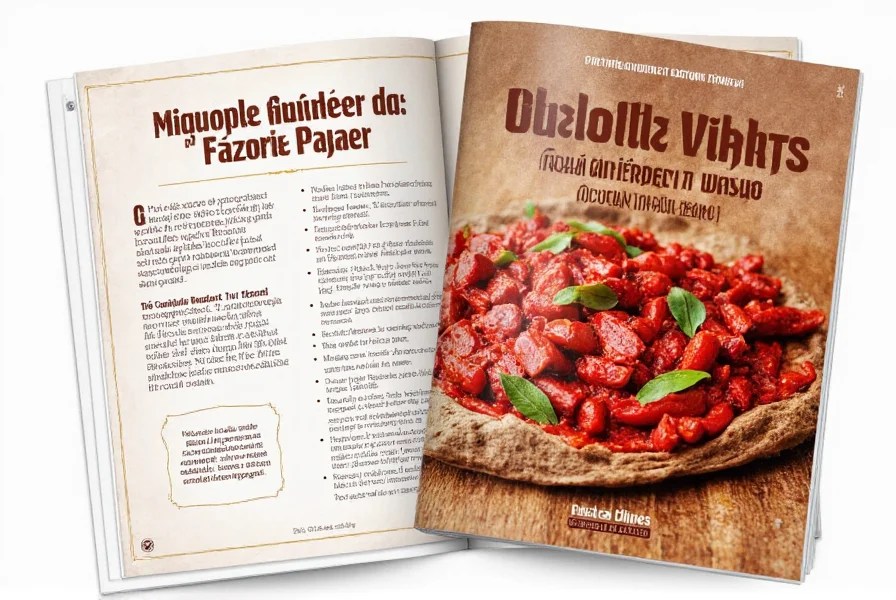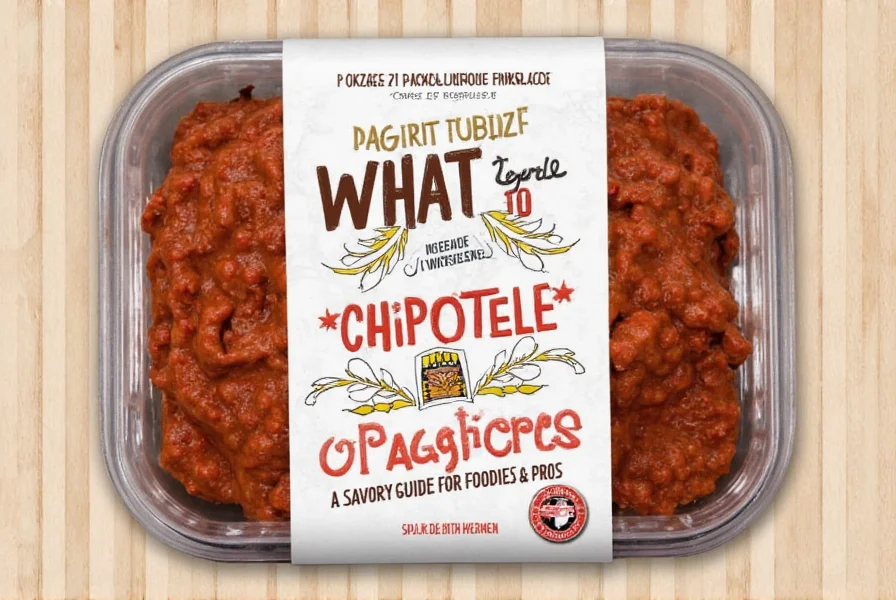Chipotle is a smoke-dried jalapeño pepper. It's made by smoking and drying ripe red jalapeños, giving it a distinctive smoky flavor and moderate heat. This traditional Mexican ingredient is widely used in cooking for its rich, complex taste.
Table of Contents
- What Is Chipotle?
- Flavor Profile: What Does Chipotle Taste Like?
- How to Use Chipotle in Cooking
- Different Forms of Chipotle (and How to Choose)
- Buying Guide: Picking the Best Chipotle Products
- Chipotle vs Other Chilies: Where Does It Stand?
- Health Benefits of Chipotle
- Frequently Asked Questions About Chipotle
- Final Thoughts
What Is Chipotle?
This traditional Mexican preservation method transforms ripe red jalapeños into the smoky, earthy ingredient known as chipotle. The process involves slowly smoking and drying the peppers until they become wrinkled and dark brown, concentrating their flavor while adding a distinctive woodsy aroma.

Flavor Profile: What Does Chipotle Taste Like?
If flavor had a personality, chipotle would be your adventurous friend who brings charcuterie to the bonfire — bold, mysterious, and deeply satisfying.
- Smoky: The drying process over slow-burning wood gives chipotle a deep, smoky aroma and taste, often compared to barbecue notes.
- Earthy: It carries a rustic undertone, reminiscent of soil after rain — grounding and complex.
- Mild to Medium Heat: Ranging between 2,500–8,000 Scoville units, it's hotter than a poblano but milder than habanero.
- Slightly Sweet: Especially when dried or canned, chipotle develops subtle sweetness, balancing the heat beautifully.
| Chili | Heat Level (Scoville) | Main Flavor Notes |
|---|---|---|
| Chipotle | 2,500–8,000 | Smoky, Earthy, Slightly Sweet |
| Jalapeño (Fresh) | 2,500–5,000 | Grassy, Crisp, Mild |
| Poblano | 1,000–2,000 | Herbaceous, Rich |
| Habanero | 100,000–350,000 | Fruity, Fiery |
How to Use Chipotle in Cooking
Now that you know what chipotle is, let's dive into how to wield this flavorful weapon in your kitchen arsenal. Here are some tried-and-true ways to use chipotle like a pro:
- Make Adobo Sauce: Blend chipotles with vinegar, garlic, tomato paste, and spices for an instant flavor boost. Great for marinades!
- Add to Soups & Stews: Rehydrate dried chipotle in hot water and toss into chili, posole, or black bean soup for a smoky twist.
- Spice Up Meat Rubs: Mix ground chipotle powder with cumin, salt, and lime zest for a killer steak or pork rub.
- Enhance Sauces: Add a few drops of chipotle in adobo to mayonnaise, ketchup, or aioli for a smoky-hot condiment.
- Use in Desserts: Yes, really! Try a pinch in chocolate mole cake or spiced brownies for a surprising kick.

Pro Tip: Balance the Heat
Want to tame the fire? Add a touch of honey, lime juice, or yogurt to your chipotle-based dish to balance out the heat and bring harmony to your palate.
Different Forms of Chipotle (and How to Choose)
Chipotle comes in more forms than you'd think! Let's break them down so you can pick the right one for your recipe:
1. Whole Dried Chipotle Peppers
- Best For: Slow-cooked dishes, soups, and sauces where you can rehydrate and blend them.
- Pros: More intense flavor, customizable texture.
- Cons: Need preparation time (soak in hot water first).
2. Ground Chipotle Powder
- Best For: Dry rubs, seasoning blends, and quick additions to baked goods or snacks.
- Pros: Instant flavor, easy to store and use.
- Cons: Can lose potency over time; store in a cool, dark place.
3. Chipotle in Adobo Sauce (Canned)
- Best For: Quick recipes — salsas, dips, dressings, and burgers.
- Pros: Ready to use, adds both flavor and moisture.
- Cons: Higher sodium content; can be overpowering if used in excess.

| Form | Best Use Case | Shelf Life | Flavor Intensity |
|---|---|---|---|
| Whole Dried | Cooking from scratch | 6–12 months | High |
| Ground | Quick seasoning | 6–9 months | Medium |
| In Adobo | Fast flavor boost | Unopened: 2–3 years / Opened: 1–2 weeks | Medium-High |
Buying Guide: Picking the Best Chipotle Products
When you're standing in front of the spice aisle or browsing online, how do you choose the right chipotle product? Here's a guide to help you make the best pick based on your needs.
For Beginners
- Product: Canned chipotle in adobo sauce (e.g., La Costeña brand)
- Why: Ready-to-use and less intimidating. Just chop and add to sandwiches, mayo, or salsa.
- Use Cases: Burgers, wraps, taco fillings, dressings.
For Intermediate Cooks
- Product: Ground chipotle powder
- Why: Easy to incorporate into dry rubs and marinades without fussing with soaking or chopping.
- Use Cases: Barbecue seasoning, popcorn seasoning, roasted veggies.
For Pro-Level Chefs
- Product: Whole dried chipotle peppers
- Why: Offers the most depth and control. Soak and puree to make homemade adobo sauce or moles.
- Use Cases: Complex stews, sauces, homemade hot sauces.

| Product | Features | Target Audience | Best For |
|---|---|---|---|
| La Costeña Chipotle in Adobo | Ready to use, bold flavor, soft texture | Beginners & busy cooks | Quick meals, sauces, tacos |
| McCormick Culinary Chipotle Powder | Strong aroma, fine grind, consistent quality | Chefs & home cooks | Rubs, seasonings, grilled meats |
| Nico's Whole Chipotle Peppers | Organic, natural smoke-drying process | Foodies & professionals | Homemade sauces, gourmet dishes |
Chipotle vs Other Chilies: Where Does It Stand?
Understanding how chipotle stacks up against other popular chilies helps you choose the right ingredient for the right job. Here's how chipotle compares:
Chipotle vs Jalapeño
Same family, different vibes. While a fresh jalapeño is crisp and grassy, chipotle is deep and smoky due to the drying process. Think of chipotle as the older, cooler cousin who went to culinary school and started smoking their own food.
Chipotle vs Ancho
Ancho peppers are dried poblanos — mild, sweet, and rich. Chipotle brings the heat and the smoke, making it a better match for bolder dishes like chorizo or barbecued ribs.
Chipotle vs Habanero
If chipotle is a campfire, habanero is a blowtorch. Habaneros pack serious punch and come with fruity undertones, while chipotle focuses on warmth and depth without the face-melting heat.
Health Benefits of Chipotle
Beyond the flavor, chipotle packs a punch nutritionally too. Capsaicin — the compound responsible for the heat — brings several health perks:
- Boosts Metabolism: Spicy foods increase internal body temperature, which can temporarily speed up metabolism.
- Anti-Inflammatory Properties: Capsaicin may reduce inflammation and help manage conditions like arthritis.
- Heart Health: Studies suggest moderate chili consumption can improve cholesterol levels and blood circulation.
- Pain Relief: Topical capsaicin creams are often used to relieve muscle pain and nerve-related discomfort.

Frequently Asked Questions About Chipotle
What is chipotle?
Chipotle is a smoke-dried jalapeño pepper. It starts as a regular green jalapeño that's left to ripen until red, then slowly smoke-dried until it becomes wrinkly, dark brown, and packed with intense flavor. This traditional Mexican preservation method gives chipotle its distinctive smoky character.
Is chipotle spicy?
Yes, but not overly so. It lands somewhere in the medium range of the Scoville scale (2,500–8,000 SHU). Compared to everyday jalapeños, chipotle is slightly spicier due to the concentration from drying. It provides a warm, building heat rather than an immediate face-melting sensation.
Can I substitute chipotle?
Absolutely! If you don't have chipotle on hand, try using paprika mixed with a pinch of cayenne for heat, or ancho chili powder blended with a drop of liquid smoke to replicate the smoky component. For chipotle in adobo sauce specifically, a mix of smoked paprika, tomato paste, vinegar, and garlic can work as a substitute.
Are there different types of chipotle?
While most chipotle comes from smoked jalapeños, regional variations exist. Some producers use different woods (like mesquite or oak) for smoking, which affects flavor. There's also "chipotle meco" which is smoke-dried longer, resulting in a darker, more intense flavor. The term "chipotle" specifically refers to smoked jalapeños, not other chilies.
How long does chipotle last?
- Dried whole peppers: Up to a year in a sealed bag or container away from light.
- Ground chipotle: 6–9 months (store in a cool, dark place).
- Canned chipotle: 2–3 years unopened; once opened, refrigerate and use within 1–2 weeks.
To extend shelf life, store opened canned chipotle in a clean glass container with its adobo sauce in the refrigerator.
Is chipotle just a brand name?
No, chipotle is not just a brand name. While there is a popular restaurant chain called Chipotle Mexican Grill, the term "chipotle" itself refers to the smoke-dried jalapeño pepper. The restaurant was named after this traditional Mexican ingredient, which has been used for centuries in Mexican cuisine.
What's the difference between chipotle and jalapeño?
A jalapeño is a fresh green pepper, while chipotle is a smoke-dried version of a fully ripe (red) jalapeño. The drying process gives chipotle its distinctive smoky flavor and deeper, earthier taste profile compared to fresh jalapeños. Chipotle is typically hotter than fresh jalapeños due to the concentration of capsaicin during the drying process.
Where does the word "chipotle" come from?
The word "chipotle" comes from the Nahuatl (Aztec) language, combining "chil" (chili) and "poctli" (smoked). So literally, it means "smoked chili." This reflects the traditional preparation method used for centuries in Mexico before the Spanish arrived. The term has been adopted into English and Spanish as the standard name for this specific preparation of jalapeños.
Can I make chipotle at home?
Yes, but it requires patience and the right equipment. To make chipotle at home, you'll need fully ripe red jalapeños, a smoker, and wood chips (traditionally oak or fruit woods). The peppers are smoked at low temperatures (about 200°F/93°C) for 12-24 hours until they're dry but still pliable. Making authentic chipotle requires careful temperature control to achieve the right balance of smoke and preservation without burning the peppers.
What dishes commonly use chipotle?
Chipotle appears in many traditional Mexican dishes like mole, adobo sauces, and certain salsas. Beyond Mexican cuisine, it's commonly used in barbecue rubs, smoked cheese spreads, Bloody Mary cocktails, roasted vegetable dishes, and even chocolate-based desserts. Its smoky depth enhances everything from soups and stews to marinades and salad dressings. Chipotle in adobo sauce is particularly popular for adding flavor to mayonnaise-based sauces and dips.
Final Thoughts
So now you know the answer to the burning question: What is chipotle? It's more than just a trendy topping at your local burrito joint — it's a flavor powerhouse with roots in tradition and a future in innovation.

Whether you're sprinkling chipotle powder into your next batch of grilled corn or blending whole peppers into a rich, smoky mole, this little chili can elevate your cooking from basic to brilliant. So go ahead — embrace the smoke, savor the heat, and spice up your life with chipotle!











 浙公网安备
33010002000092号
浙公网安备
33010002000092号 浙B2-20120091-4
浙B2-20120091-4